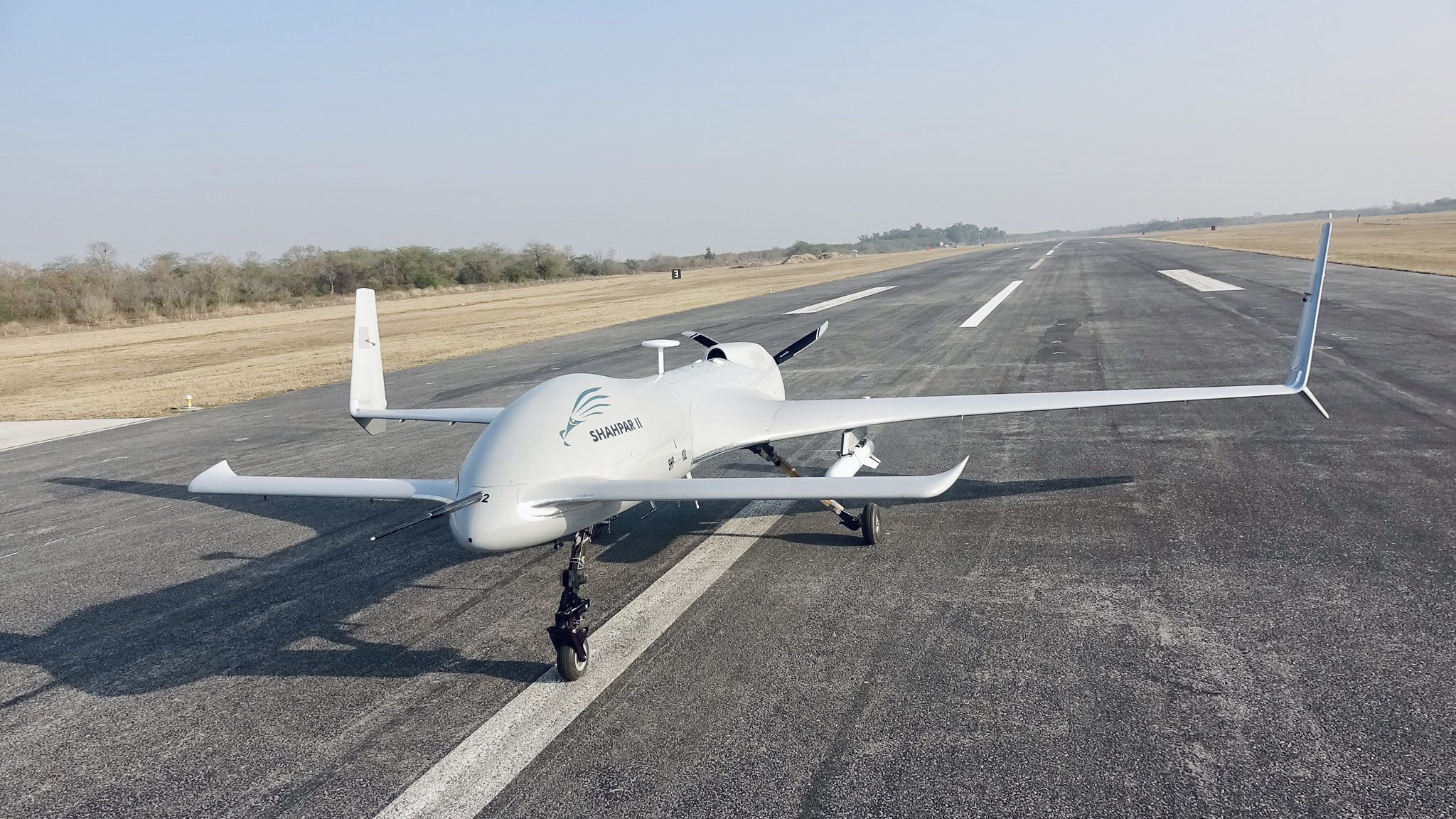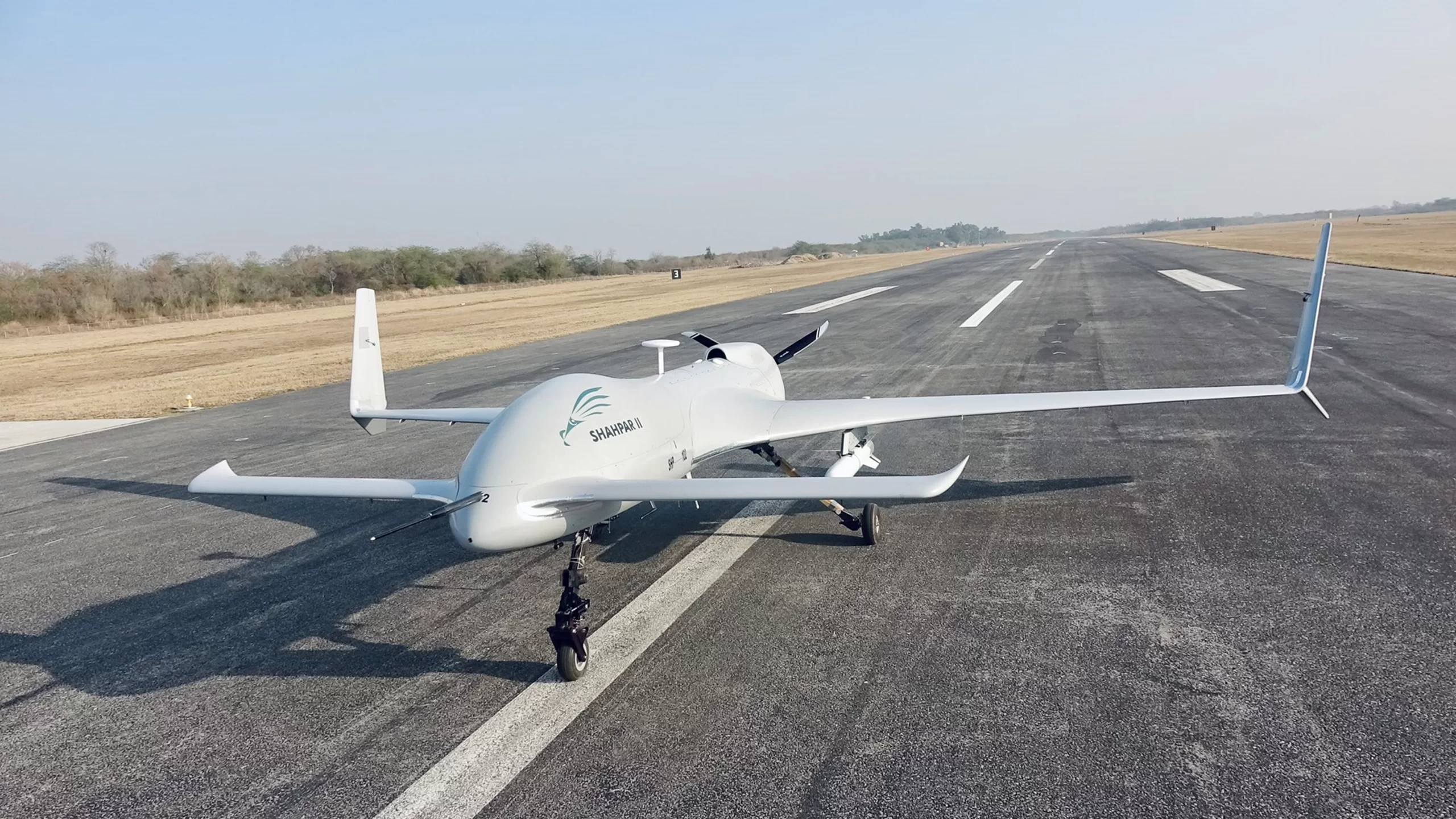7349Views

GIDS Shahpar-2 Unmanned Aerial Vehicle (UAV)
The Shahpar-II is a medium-altitude long-endurance (MALE) UAV developed and manufactured by Pakistan’s National Engineering and Scientific Commission (NESCOM) and marketed by Global Industrial & Defence Solutions (GIDS).
It is a continued development of the NESCOM Shahpar-I. The Shahpar-II serves both reconnaissance and combat roles, offering advanced capabilities for various mission profiles.
Shahpar-2 Design Background
The Shahpar-II features a canard-pusher configuration airframe design. Its development began in 2017, with the Shahpar-II being officially unveiled in March 2021.
According to GIDS, the Shahpar-II features a “modular airframe” with an “advanced composite and metallic hybrid structure with improved aerodynamic design.” It has retractable landing gears, an enhanced powerplant, and asymmetric landing capabilities.
Compared to the Shahpar-I, the Shahpar-II amounted to a significant capability upgrade in terms of range, endurance, and payload. Where the Shahpar-I was primarily capable of real-time reconnaissance, the Shahpar-II was more versatile in both its air-to-surface strike as well as intelligence, surveillance, and reconnaissance (ISR) capabilities.
The Shahpar-II is currently in service with Pakistani armed forces and is being actively marketed for export. GIDS has demonstrated the platform to military delegates from multiple countries, including Azerbaijan, Nigeria, Iraq, Saudi Arabia, and Kenya. The system is positioned as a cost-effective alternative to comparable platforms like the Chinese CH-4 and Turkish Bayraktar TB2.
GIDS Shahpar-2 Specifications
Physical Dimensions
- Length: 8 meters
- Wingspan: 31 feet
- Maximum Takeoff Weight (MTOW): 1,075 kg
Shahpar 2 Block-I Specifications
- Endurance: 14 hours
- Data-Link Range:
- Line-of-Sight: 300 km
- Beyond Line-of-Sight: 1,050 km
- Flight Ceiling: 20,000 ft
- Payload: 60 kg under each wing
Shahpar-2 Block-II Specifications
- Endurance:
- Surveillance: 20 hours
- Armed: 12 hours
- Service Ceiling:
- Surveillance: 23,000 ft
- Armed: 21,000 ft
- Maximum Speed: 220 km/h
- Data Link Range:
- Line-of-Sight (LOS): 300 km
- SATCOM: 1,500 km
- Weapons Payload:
- 180 kg via four hardpoints, each capable of supporting air-to-ground missiles (AGM) weighing up to 45 kg.
Shahpar-2 Block-I vs. Block-II
The Shahpar Block-II offers several improvements over the Block-I:
- Increased Endurance and Service Ceiling: Block-II provides longer endurance and higher service ceilings in both surveillance and armed configurations.
- Advanced Communication Systems: Enhanced data link range with SATCOM capabilities, allowing for extended operational reach.
- Improved Payload Capacity: Block-II supports a wider range of payloads and armaments, increasing its versatility in various mission profiles.
Key Capabilities of the Shahpar-2 Block-II
The Shahpar-II is designed for multi-mission roles, including targeted strikes and intelligence-gathering. It can be equipped with a variety of payload types, such as the Zumr-II electro-optical/infrared (EO/IR) turret as well as communications intelligence (COMINT), electronic intelligence (ELINT), and synthetic aperture radar (SAR) suites.
Surveillance and Reconnaissance
The UAV can perform day/night surveillance with real-time data transmission over ranges up to 1,050 km using SATCOM or 300 km via line-of-sight communication.
Combat Operations
In its armed configuration, the Shahpar-II can carry up to four Burq AGMs, providing precision strike capabilities against ground targets such as tanks and artillery.
Flexibility and Adaptability
The modular design allows for easy integration of different payloads and systems, making it adaptable for various mission requirements.
Autonomous Operations
Features such as automated take-off and landing enhance operational efficiency and reduce the need for extensive ground support. The UAV also features an autopilot system and mid-air engine restart capability.
Comprehensive Package
Besides the drone, GIDS can package the Shahpar-II with a complete package of weapons, sensors, and mission systems, enabling the user to operate the UAV ‘out of the box.’ For example, GIDS can provide a proprietary data-link, mission planning and management software, the Burq-series of air-to-surface weapons, and the EO/IR, SAR, COMINT and ELINT systems.
News Updates, Comments, and Analysis
Analysis: Pakistan's GIDS Makes Drone Marketing Push (March 2024)
Global Industrial and Defence Solutions (GIDS), the sales and marketing conglomerate representing various Pakistani state-owned defence contractors, demonstrated its Shahpar-II Block-II unmanned aerial vehicle (UAV) to military delegates from 11 countries, including, reportedly, Azerbaijan, Nigeria, Iraq, Saudi Arabia, and Kenya, among others. Read the full article here.
Analysis: Updates to Pakistan's Drone Fleet (January 2023)
A review of Pakistan’s induction of the NESCOM Shahpar-I and Shahpar-II as well as other drone models since 2019. Read the full article here.
News: Pakistan Showcases New Shahpar-2 Drone (December 2021)
Pakistan’s Global Industrial & Defence Solutions (GIDS) first showcased its new armed unmanned aerial vehicle (UAV), the Shahpar-II, at the Egypt Defence Expo (EDEX). Read the full article here.
Analysis: Pakistan's Drone Programs Poised for Growth (July 2021)
Pakistan’s unmanned aerial vehicle (UAV) programs are poised for significant growth through the 2020s.
The country has at least two medium-altitude long-endurance (MALE) UAVs under development – i.e., the National Engineering and Scientific Commission (NESCOM) Shahpar-2 and unnamed Pakistan Aeronautical Complex (PAC) drone – and active contracts for Chinese CH-4s.
In addition, Pakistan will also deploy a new communications satellite (SATCOM) equipped with Ku-band and Ka-band transponders, i.e., the PakSat-MM1. Though meant for civilian usage, the fact that Pakistani military service arms (especially the Navy) are acquiring SATCOM terminals suggest that the armed forces can theoretically use the PakSat-MM1 and current PakSat-1R for defence purposes.


